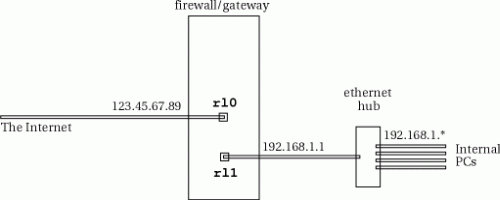
NAT allows multiple computers to access internet resources via a gateway method known as NAT which comes in routers (hardware devices) or software implementations on Linux (ipchains) and other Unix variants. You can also use NAT technology in Windows 2000 and with Windows 9x with 3rd party software (I think WinRoute Pro is a solid choice for 9x). NAT uses private addresses on an internal network which are interpreted by the NAT device or software into one single public IP address for use on the public network or internet. NAT also allows "port forwarding" which will allow you to forward TCP/UDP port requests to a specific internal host with a private IP address. This action is also transparent to the client requesting the service. The limitations of NAT are: You cannot use a single NAT device for more than one subnet (you cannot route packets to a NAT device/software, you must be on the same subnet as the device's internal port address). You must use Passive FTP mode so that your client will request an incoming port for incoming data via FTP, in traditional FTP, the FTP server assigns the port. IPSec cannot be used (VPN: L2TP uses IPSec, must use PPTP).
